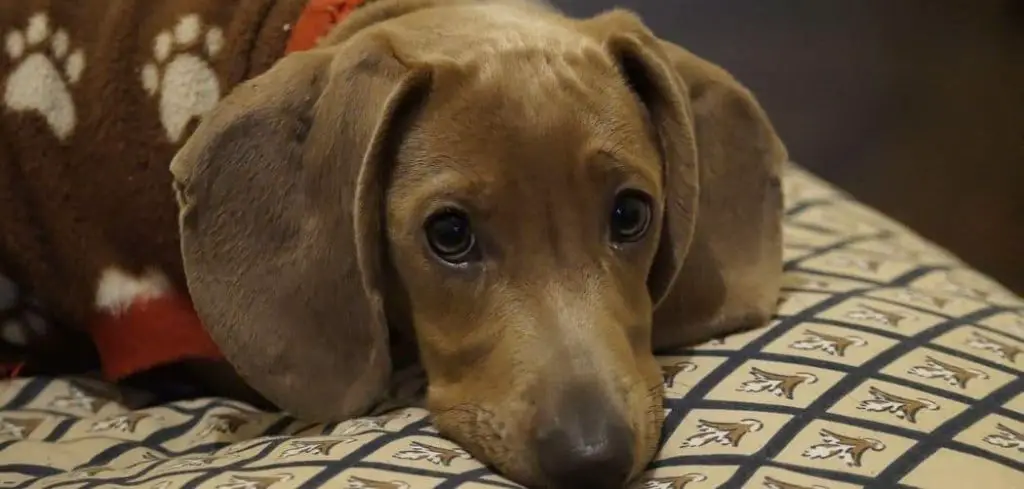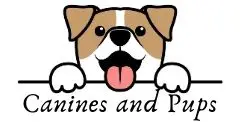If your dog is not eating and has loose stools, it can be worrying. These symptoms often indicate that something is off with your dog’s health.
Understanding why your dog is refusing food and experiencing diarrhea can help you identify potential causes, take appropriate action, and know when to seek veterinary help.
We outline the common reasons why your dog may be not eating and having loose stools, what signs to watch for, and how to care for your dog during this troubling time.
Table of Contents
What Does It Mean When Your Dog Is Not Eating and Has Loose Stools?
Loose stools in dogs are characterized by soft, watery, or unformed feces passed more frequently than normal. When this happens alongside a refusal to eat, it often means your dog’s digestive tract is irritated or damaged.
Refusal to eat may develop because your dog feels nauseous, has abdominal pain, or simply doesn’t feel well. Dogs can also stop eating when stressed or anxious, or if they associate food with feeling sick.
The combination of loose stools and lack of appetite can lead to dehydration, weakness, and in severe cases, more serious complications.
That’s why it is essential to identify the underlying cause promptly.

Common Causes of Dog Not Eating and Loose Stools
1. Gastrointestinal Infections
Bacterial, viral, or parasitic infections are among the most frequent reasons for loose stools and a poor appetite in dogs.
Infections such as parvovirus, giardia, or bacterial overgrowth can inflame the gut lining and disrupt digestion.
Infected dogs may vomit, have diarrhea, and refuse to eat as a result of the discomfort.
These infections also cause fluid loss, leading to dehydration which further suppresses appetite.
Prompt veterinary diagnosis and treatment are crucial, especially if your dog shows signs of lethargy, bloody diarrhea, or vomiting.
Related: Dog not eating and peeing blood (Here’s why)
2. Dietary Changes or Food Intolerance
Switching your dog’s food suddenly or feeding something new can upset their stomach and cause loose stools and refusal to eat.
Dogs’ digestive systems often need time to adjust to new ingredients, textures, or brands.
Some dogs may be intolerant or allergic to certain proteins, grains, or additives in food.
This intolerance can trigger diarrhea, bloating, and appetite loss.
To prevent this, always introduce new food gradually over 7-10 days.
Choose high-quality, well-balanced dog food suited to your dog’s age, breed, and health status.
3. Stress and Anxiety
Stressful situations such as moving homes, loud noises, separation anxiety, or new pets can upset your dog’s digestive system.
Stress often causes changes in appetite and can result in loose stools.
Stress hormones affect gut motility and increase fluid secretion into the intestines, leading to diarrhea.
A stressed dog may also refuse to eat, either from loss of interest or nausea.
Recognizing stress triggers and creating a calm environment can help your dog recover.
Providing familiar toys, routine walks, and gentle reassurance often eases symptoms.
4. Illness and Systemic Diseases
Many illnesses cause symptoms of dog not eating and loose stools.
These include pancreatitis, kidney or liver disease, inflammatory bowel disease, or cancer.
Such conditions impair digestion or cause inflammation, resulting in diarrhea and loss of appetite.
Additionally, fever, abdominal pain, and lethargy often accompany these symptoms.
If your dog refuses food and has loose stools for more than 24-48 hours, or shows signs of pain and weakness, veterinary evaluation is essential to rule out serious disease.
Related: Dog not eating and throwing up foam (Here’s why)
5. Poisoning or Toxin Ingestion
Dogs sometimes ingest toxic substances such as chemicals, spoiled food, plants, or human medications.
Poisoning often causes sudden onset of loose stools, vomiting, and refusal to eat.
Toxins can damage the gut lining, impair organ function, and cause dehydration.
Ingestion of poisons requires immediate veterinary care, as delays can be life-threatening.
If you suspect your dog has eaten something toxic, monitor them closely and seek emergency help.
6. Side Effects of Medication
Certain medications can irritate a dog’s digestive tract, causing diarrhea and loss of appetite.
Antibiotics, anti-inflammatory drugs, or dewormers sometimes have these side effects.
If your dog has recently started new medication and shows these symptoms, consult your vet.
They may adjust the dosage or prescribe medications to protect the gut lining.
Related: Dog not eating and lethargic (Here’s why)
Signs to Watch for When Your Dog Is Not Eating and Has Loose Stools
Frequency and consistency of stools: How loose are the stools and how often are they passing?
Presence of blood or mucus: This can indicate severe intestinal irritation or infection.
Vomiting: Combined vomiting and diarrhea increase the risk of dehydration.
Lethargy or weakness: A lack of energy suggests your dog is seriously unwell.
Dehydration signs: Sunken eyes, dry gums, loss of skin elasticity, and excessive panting.
Abdominal pain: Whining, restlessness, or sensitivity when touching the stomach.
Fever: A raised temperature indicates infection or inflammation.
How to Care for a Dog Not Eating and Having Loose Stools
1. Monitor Hydration Closely
Loose stools can quickly lead to fluid loss.
Make sure fresh water is always available and encourage your dog to drink.
You can also offer ice cubes or diluted electrolyte solutions recommended by your vet.
2. Adjust Feeding
If your dog refuses food but is otherwise stable, try offering bland, easy-to-digest meals such as boiled chicken and rice.
Feed small portions several times a day to reduce gastrointestinal stress.
Avoid treats, fatty foods, and dairy products until your dog’s stools improve.
3. Maintain a Calm Environment
Reduce stress by maintaining routines and providing a quiet space for your dog.
Limit exposure to loud noises or disruptive visitors during recovery.
4. Avoid Sudden Diet Changes
If you suspect diet caused the problem, wait until stools normalize before slowly reintroducing regular food.
Avoid abrupt switches and always transition over days to weeks.
When to Seek Veterinary Help
While mild cases of dog not eating and loose stools may resolve with home care, veterinary attention is needed if:
Diarrhea lasts more than 48 hours or worsens
Stool contains blood or mucus
Your dog is vomiting persistently
Signs of dehydration develop (sunken eyes, dry gums)
Your dog becomes lethargic or weak
There is abdominal pain or bloating
Your dog is a puppy, elderly, or has a compromised immune system
You suspect poisoning or toxin ingestion
A veterinarian will perform diagnostic tests like stool analysis, blood work, and imaging to determine the root cause and provide appropriate treatment, which may include fluids, medications, or specialized diets.
Key Takeaway
A dog not eating and having loose stools is a sign that your dog’s digestive health is compromised.
Causes can range from minor dietary upsets to serious infections or illnesses.
Always monitor your dog closely for additional symptoms and changes in behavior.
Mild cases can sometimes improve with supportive care at home, but persistent or severe symptoms require prompt veterinary evaluation.
By understanding the common causes and knowing when to act, you can help your dog recover faster and prevent complications like dehydration.
If you notice your dog is not eating and has loose stools, don’t wait too long — consult your veterinarian to get to the root of the problem and ensure your furry friend stays happy and healthy.
